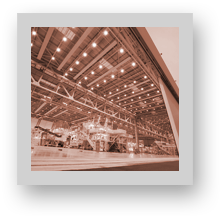Global Expertise
Local Footprint

OUR SERVICES

OUR SERVICES
CWAL provides customers with state-of-the-art leasing products, including operating lease, finance lease, tax lease and sale and leaseback. CWAL specializes in designing structured leasing solutions and provides value added services to customers. CWAL excels in sourcing equity and arranging debt financing and capital market funding. CWAL provides customers with expert advice on aircraft portfolio, residual value and lease management.
The term of an aircraft operating lease may range from 5 to 12 years. An aircraft under an operating lease will be required to be redelivered to the lessor in full compliance with the redelivery condition at expiry of the lease. Individually tailored to customers’ needs, operating leases will provide airlines with fleet flexibility in terms of new aircraft types and routes and will enable airlines to respond swiftly to changes in demand in capacity. This is an essential competitive advantage to an airline in a cyclical and volatile market environment. Operating leases will reduce capital expenditure by, and preserve liquidity of, airlines. Pre-delivery payment financing and long-term financing of aircraft can also be arranged by CWAL. An operating lease may be an off-balance-sheet leasing product to a lessee and may help an airline’s financial management.
In a finance lease structure, title to an aircraft will be transferred to a special purpose lessor set up in a tax neutral jurisdiction. The lessor will lease the aircraft to an airline by way of a finance lease. Any relevant accounting rules in relation to classification of leases will be adhered to in structuring a finance lease. A finance lease will enable financiers to take control of the ownership of an aircraft. This will enhance the security position of the financiers and will facilitate closing of the financing. At the end of the lease term, title to the aircraft will be transferred to the airline by virtue of an automatic title transfer mechanism or the exercise of a bargain purchase option by the airline. Notwithstanding that the legal ownership of an aircraft will vest in the lessor, the lessee will be regarded as the economic owner of the aircraft from accounting perspectives in most jurisdictions.
An airline may have placed orders with aircraft manufacturers. For portfolio management or financial considerations, the airline may assign its right to purchase an aircraft to a lessor. The lessor will take delivery of the aircraft and lease it to the airline by way of an operating lease. The assignment of the airline’s right to purchase an aircraft under a purchase agreement to the lessor will be achieved by a purchase agreement assignment, with the consent of the aircraft manufacturer. An airline may have a plan to gradually renew its fleet of aircraft. It may dispose of used aircraft and receive the purchase price and lease the aircraft back from the purchaser. By virtue of sale and leaseback of aircraft, the airline will be able to implement fleet renewal with minimal disruption to its operation.